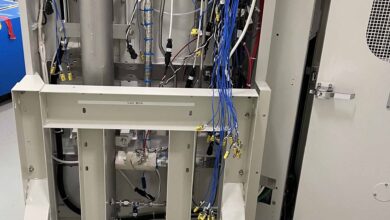From Sprout to Sequoia: Orchestrating the Symphony of IoT Growth and Cloud Scalability

The Evolution of IoT: From Small Beginnings to Expansive Networks
The Internet of Things (IoT) has come a long way from its nascent stages. What once started as a concept limited to basic sensors and rudimentary data collection has now evolved into a vast ecosystem of interconnected devices, smart applications, and seamless automation. The journey of IoT is much like the growth of a small sprout into a towering sequoia—what begins as a simple device soon transforms into a complex, integrated network that requires strategic scaling and robust infrastructure.
As businesses and industries increasingly embrace IoT, the need for an efficient framework to support rapid expansion has become critical. Early adopters often find themselves struggling with the transition from pilot projects to full-scale deployments. This transformation necessitates not only advanced technological capabilities but also a deep understanding of how cloud computing can serve as the backbone for sustainable growth.
The Role of Cloud Computing in IoT Scalability
Cloud computing plays an instrumental role in ensuring that IoT networks can scale seamlessly. The traditional approach of on-premise servers is often inefficient, costly, and lacks the flexibility needed for the dynamic nature of IoT applications. Cloud platforms, on the other hand, provide virtually limitless storage, on-demand computational power, and real-time data processing, making them the perfect fit for large-scale IoT deployments.
One of the major advantages of cloud integration in IoT is its ability to handle massive data influxes. As IoT devices generate an exponential amount of data, cloud solutions offer the necessary infrastructure to store, analyze, and manage information efficiently. This ensures that businesses can derive actionable insights without being constrained by physical limitations.
Moreover, the cloud provides enhanced security and reliability. With IoT security being a growing concern, cloud-based solutions offer encryption, authentication mechanisms, and continuous monitoring to safeguard data integrity. This not only protects sensitive information but also ensures compliance with industry regulations, which is crucial for businesses operating in regulated sectors.
Navigating the Challenges of IoT Expansion
Despite its numerous advantages, the path to IoT scalability is not without its hurdles. Organizations often face challenges related to network connectivity, data overload, and system integration when expanding their IoT ecosystems. Understanding these challenges and proactively addressing them can make the journey from a small-scale implementation to a full-fledged IoT network much smoother.
Network latency is one of the most pressing concerns in large IoT deployments. As the number of connected devices increases, so does the strain on bandwidth and response times. Edge computing, in conjunction with cloud computing, is emerging as a solution to this problem. By processing data closer to the source, edge computing reduces latency and enhances real-time decision-making, thus improving overall system efficiency.
Another major challenge is interoperability. Different IoT devices often operate on diverse protocols and standards, making it difficult to establish seamless communication across an entire ecosystem. Businesses must invest in middleware solutions and standardized frameworks that bridge compatibility gaps, ensuring that their IoT devices function harmoniously within a unified system.
Best Practices for Scaling IoT with Cloud Technologies
Successfully scaling an IoT network requires a strategic approach that incorporates cloud-based solutions, robust security measures, and intelligent data management. Here are some best practices that businesses can adopt to ensure smooth expansion:
- Adopt a Hybrid Cloud Strategy: While public clouds offer scalability, private clouds provide security. A hybrid cloud model allows businesses to balance these aspects, ensuring that sensitive data remains secure while benefiting from the elasticity of public cloud infrastructure.
- Implement AI and Machine Learning for Data Optimization: AI-driven analytics help process vast amounts of IoT data efficiently. By integrating machine learning algorithms, businesses can gain predictive insights, automate workflows, and optimize operational efficiency.
- Prioritize Security at Every Level: Security must be an integral part of IoT scaling. Implementing multi-layered authentication, end-to-end encryption, and regular compliance audits ensures that the network remains resilient against cyber threats.
- Leverage Edge Computing for Speed and Efficiency: Deploying edge computing reduces latency, enhances data processing speeds, and ensures uninterrupted operations, particularly in critical applications such as healthcare, industrial automation, and smart cities.
- Develop Scalable API Frameworks: As IoT ecosystems grow, APIs play a crucial role in ensuring seamless integration between devices, applications, and cloud platforms. Investing in well-documented, scalable APIs can streamline communication and improve overall system performance.
Real-World Applications: Companies Thriving with IoT and Cloud Integration
Numerous companies have successfully scaled their IoT infrastructure with the help of cloud computing. Tech giants like Amazon, Google, and Microsoft have heavily invested in IoT-driven solutions powered by their respective cloud platforms, offering businesses an array of tools to streamline their operations.
For instance, smart cities leverage IoT and cloud technologies to manage traffic systems, optimize energy consumption, and enhance public safety. In the healthcare industry, cloud-based IoT solutions facilitate remote patient monitoring, predictive analytics for disease prevention, and real-time diagnostics, significantly improving patient outcomes.
The manufacturing sector also benefits immensely from IoT scalability. Through cloud-enabled predictive maintenance, companies can minimize equipment downtime, reduce operational costs, and enhance overall productivity. These real-world applications showcase the transformative power of integrating IoT with cloud technology, paving the way for innovation and efficiency.
The Future of IoT Growth and Cloud Scalability
The IoT landscape is poised for exponential growth, with advancements in AI, 5G connectivity, and edge computing further propelling its capabilities. As businesses continue their journey from small-scale implementations to enterprise-wide IoT adoption, cloud technology will remain at the core of this evolution.
Emerging trends such as decentralized cloud models and blockchain-based security solutions will further enhance IoT scalability. The ability to distribute computing resources across multiple cloud environments will mitigate risks, enhance reliability, and improve cost efficiency. Additionally, edge AI will play a critical role in enabling real-time decision-making at the device level, further reducing dependency on centralized cloud processing.
The future of IoT and cloud scalability is one of boundless opportunities. As technology continues to evolve, businesses must remain adaptable, leveraging cutting-edge innovations to unlock the full potential of their IoT ecosystems. By orchestrating this symphony of interconnected devices, seamless data processing, and cloud scalability, organizations can cultivate their digital transformation—growing from a humble sprout to a towering sequoia in the digital era.



